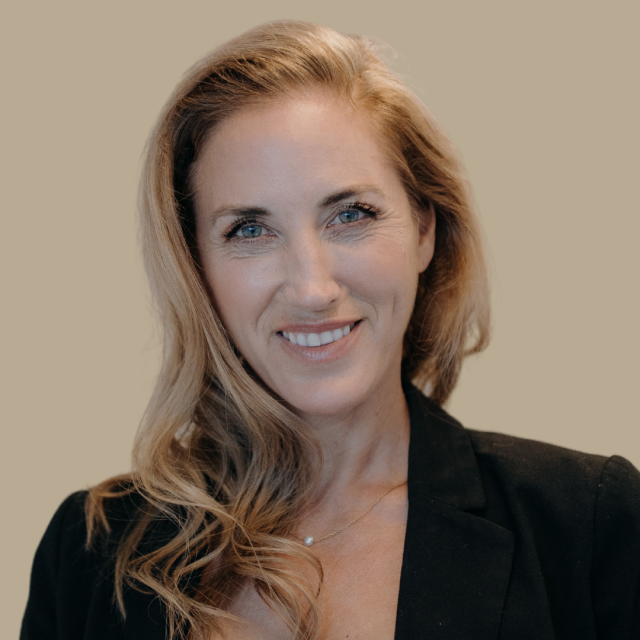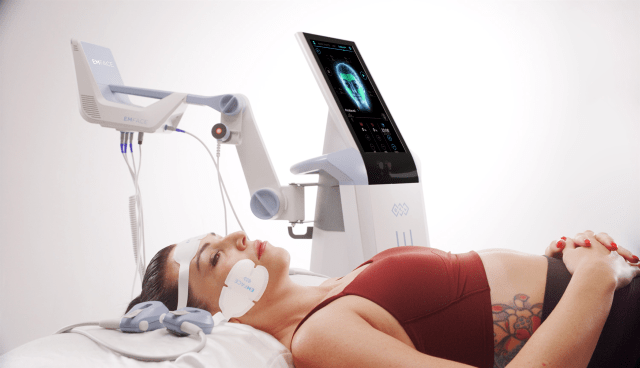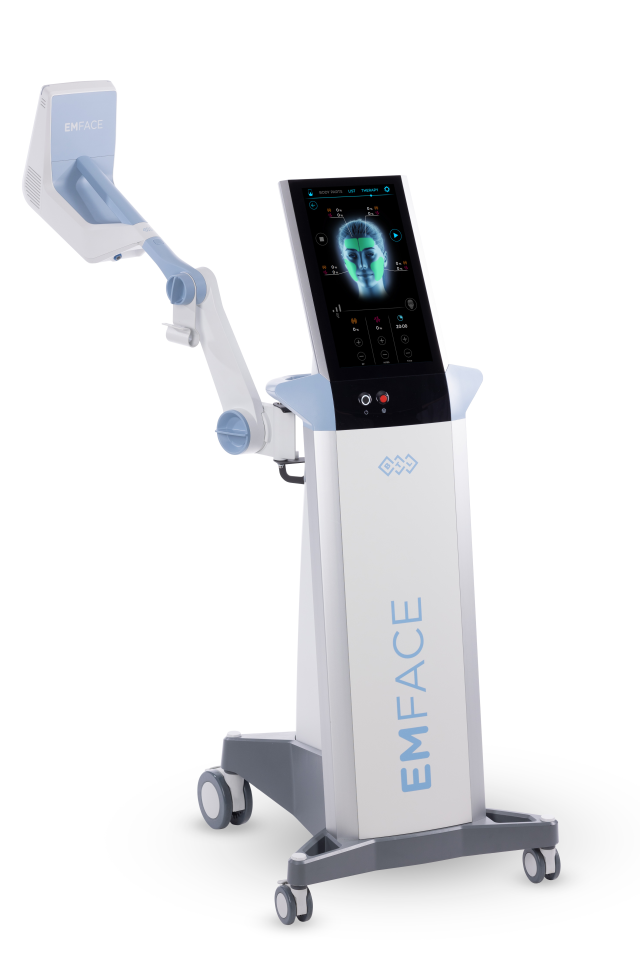EmFace is now available in New Zealand! Here’s why everyone’s talking about it

If you’ve got your finger on the pulse of trends and treatments overseas, you will have no doubt heard of EmFace. While still relatively new to the market globally, it already boasts an army of celebrity fans, including Jessica Simpson, Rebel Wilson, Jenna Dewan, and Alicia Silverstone.
No Botox, no fillers, no injectables, and clinically proven to lift, increase collagen and elastin, and lessen wrinkles – sounds too good to be true, right? Well, we tapped Dr Cat Stone of The Face Place, New Zealand’s first provider of EmFace, to get the lowdown on the pioneering treatment.

The Face Place founder Dr Cat Stone
ProCollective (PC): Exciting news that EmFace is now available in New Zealand! For your clients unacquainted, how would you best explain the treatment?
Dr Cat: EmFace is an easy, simple, non-painful and non-invasive treatment that helps lift and define the face, while improving skin texture and lines in the cheeks and forehead. It’s great for naturally improving the cheeks and midface, lifting the mouth corners, reducing the signs of sagging, like early jowls, defining the jawline and lifting the brows. It works by toning the lifting muscles of the face – the ones that weaken and cause sagging of the face as we age – to lift and support the SMAS, which in turn supports the facial tissues. I liken it to “pilates for the face” – toning the facial muscles and connective tissues without causing bulky facial muscles, resulting in a face that has ‘less wrinkles and more lift’.

PC: What sets EmFace apart from other non-invasive anti-ageing treatments on the market?
Dr Cat: This is a revolutionary technology that specifically targets the lifting muscles of the face with HIFES – High Intensity Facial Electrical Stimulation, while working on the skin and connective tissue of the SMAS with simultaneous radiofrequency (RF) treatments to stimulate collagen and elastin in both the skin, and the connective tissues surrounding the muscles.
The SMAS (Superficial Musculo-Aponeurotic System) is a layer of the face that contains the muscles of facial expression, surrounded by connective tissue, which essentially holds the rest of the tissues (deep and superficial fat pads, and skin) onto the face. The SMAS weakens with age, especially the muscles that lift the face, as they are working against gravity, while the depressor (pulling down) muscles and tissues are working with gravity, so the whole face moves down, causing dropping of the brow, deeper smile lines, jowling and loss of definition through the jawline. The horizontal forehead lines in the forehead get deeper because as the forehead muscle weakens, it has to actively try harder to lift the brow, and this hyperactivity is what forms those lines. This is why people with a heavy brow will also often have deep lines, and if you use a neuromodulator like Botox on them, the brows will drop further, making them look more tired. In a facelift or browlift, the surgeon repositions the SMAS to a more youthful position. While we can’t promise surgical results, we are achieving the same action of repositioning the muscles to a more youthful position by stimulating the lifting muscles – treating the cause rather than the problem, and without the risks of surgery.
PC: Can you talk further to the patented technology involved?
Dr Cat: The simultaneous HIFES and RF are transmitted through three specialised pads, which are applied to the face over the cheeks and forehead, covering the lifting muscles of the face. The treatment starts with RF going through the pads, a gentle warming sensation similar to the warmth of stones in a hot stone massage. Then pulses of HIFES will run in sequence through the forehead, then cheeks, then cheeks and forehead – this feels to me like caterpillar feet, little tingles in the tissues – and then the muscles start to contract, causing a smile/grimace of the cheeks and lifting of the brow with each sequence. Your clinician gradually raises the energy to what is tolerable and easy for you to manage. Each sequence of HIFES produces supra-maximal contractions (SMC’s) of the stimulated muscles. If you tried to smile as fast as often as you could for 20 minutes you could never achieve the amount of contraction, as you potentially only use about 50% of your muscles actively and your body naturally makes you have a rest before the next contraction. In contrast, the SMC’s stimulate 90-100% contraction of the targets muscle, with no downtime between, so can achieve 250 contractions a second – stimulating the release of factors in the muscle that help it regenerate, strengthen and build tone. This is where it is like a 20 min Pilates workout for the face, but way more than Pilates could ever achieve! There is no downtime, you can peel off the pads, put on some makeup and go straight to a party if you want to.

PC: When can clients expect to see results – are they instant or overtime?
Dr Cat: Most patients will see both an instant result and then the results continue to improve overtime. We’ve had a lot of patients comment about how much they love the instant result. An initial course of treatments will be four or six treatments of 20 minutes, each a week apart, and then we review you with photos three months after your final treatment. This is because the results continue to improve over the following months. This is a treatment you can top-up at any time – there are no restrictions on the number of treatments – and they call it a ‘Cinderella treatment’ because there are instant results with no downtime! I have personally used it just before having my makeup done for a gala dinner and my makeup artist commented on how lifted and glowy my face was! We would expect that more treatments overtime would continue to provide more results. (Side note – I’ve just had my 8th treatment in five months, I love this machine!)
PC: In your opinion, who is EmFace best suited to?
Dr Cat: Almost anybody can have EmFace – men and women, and all ages can find it helpful. The best age group is the 35-55 age group, who are noticing the early sag creating flattening of the cheeks, early jowls, heavier – tired looking – brows, deepening of the nasolabial folds and/or loss of definition of the jawline. The younger ones in their 20-30’s like it for improving the shape and contour of the cheeks and jawline, and also as prevention of ageing, while the 55+ group may use it to maintain surgical results if they have had a facelift or brow lift, or as a way of gently lifting the face and improving the skin without surgery.
This is a great treatment for those who are scared of needles, fillers or looking overdone, as it is non-invasive and easy, and it’s just stimulating your own muscles, so it gives very natural looking results. It also works really well alongside other cosmetic treatments, as noted below.
There are some medical considerations that your clinician will go through with you before your first treatment. This treatment may not be advisable if you have a pacemaker or metal plates or screws in your face, and as with most cosmetic treatments, you cannot have EmFace if you are pregnant or breastfeeding.
PC: As a business owner, you obviously carefully consider what treatments you perform and brands you align with. The Face Place’s menu is already comprehensive, so what attracted you to add this treatment to your offering?
Dr Cat: We are extremely selective about what machines and procedures we offer at The Face Place – they must all be proven to be safe, simple, effective, naturally based, non-animal and medically proven. We then test any potential technology on ourselves to ensure it is has good results, minimal side effects and is good value for money. The EmFace ticked all of the boxes, and is also revolutionary in the way that it works to tone and rejuvenate the lifting muscles of the face. I spoke with other doctors overseas who had EmFace in their clinics and they all raved about it and called it ‘revolutionary’. It enhances the work we do with all of our other treatments, especially Botox and fillers, and also the skin treatments. Plus it is so simple and easy – 20 minutes a week for four to six weeks – and painless!
PC: What cost is associated with the treatment?
Dr Cat: A course of four treatments is $4995 and a course of six treatments is $6995, which includes your follow-up appointment. We recommend a course of treatments before considering a single treatment for maintenance, but a single maintenance treatment would be $1495.
PC: For those already getting regular anti-wrinkle injectables and/or filler, can EMFACE treatments incorporated into their regime too?
Dr Cat: Yes, absolutely! Many people are finding they use fewer injectables when they have the EmFace. We recommend no neuromodulator treatment for at least one week (ideally two weeks) before EmFace and no filler for 4-6 weeks prior to EmFace treatment, as you want the products to be fully integrated into the tissues. However, you can have injectables immediately after your final EmFace treatment should you choose to. I would usually recommend to do your course of EmFace and follow-up at three months, then just maintaining your regular routine of treatments, as you want to see the true impact of your EmFace course in the after photos. However, if you come in for maintenance EmFace treatments, it would make sense to slip some injectables in after the treatment if you were considering both treatments.
EmFace is now available at The Face Place in Takapuna.
